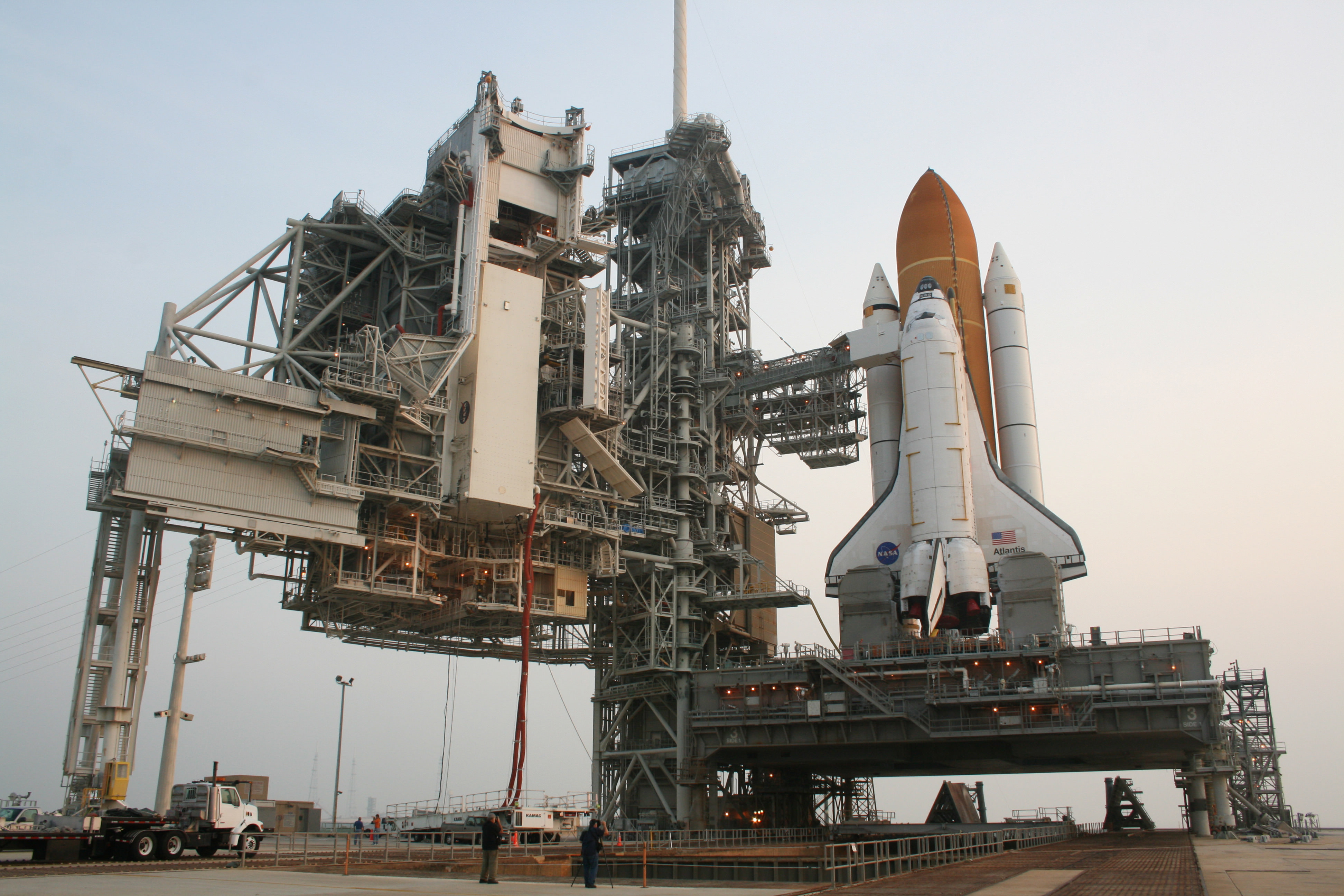
During the descent, the shuttle orbiter decelerates from hypersonic speed primarily by aerobraking and then for the landing phase it acts as a glider, making a completely unpowered (deadstick) landing. When the orbiter's mission is complete it fires its Orbital Maneuvering System (OMS) thrusters to drop out of orbit and re-enters the lower atmosphere. The prime landing site was the Shuttle Landing Facility at the Kennedy Space Center in Florida, a purpose-built landing strip. Each site included runways of sufficient length to provide adequate distance for the slowing-down of a returning spacecraft. Usually, five to seven crew members ride in the orbiter. Three locations in the United States were used as landing sites for the Space Shuttle system. The orbiter carries astronauts and payload such as satellites or space station parts into low earth orbit, into the Earth's upper atmosphere or thermosphere.

At launch, it consists of a rust-colored external tank (ET), two white, slender Solid Rocket Boosters (SRBs), and the orbiter, which is a winged spaceplane in the narrowest sense. The first goal of the Space Shuttle program was to provide NASA with an efficient, re-usable method of carrying astronauts to and from a permanently manned space station.

NASA's Space Shuttle, officially named the Space Transportation System ( STS), is the spacecraft currently used by the United States government for its human spaceflight missions and is scheduled to be retired from service in 2010. Born in 1968 at the height of the Apollo program, the Space Shuttle was designed to fulfill two basic roles in NASA post-Apollo manned flight objectives.


 0 kommentar(er)
0 kommentar(er)
